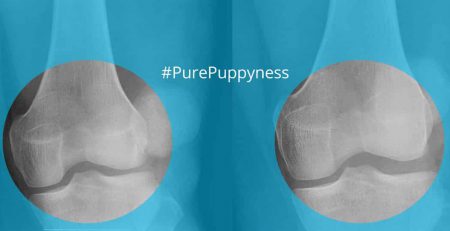Fleas
Some people dream of moving south and living in warm climates, enjoying a life of sun and sea. There are a few downsides to warm sunny weather, especially for your dog. There are obvious problems, like heat stroke, and less obvious problems, such as fleas.
Know Your Enemy
Fleas are tiny dark-coloured insects that live on animals’ skin, often hidden beneath the fur. They are parasites, feeding on the blood of animals such as dogs and cats, though they will also feed on humans! Fleas thrive in warm temperatures, and are most active during the summer, though if you live somewhere warm, fleas may be active all year round.
What’s the problem with fleas?
Fleas can jump very high due to their powerful hind legs. They can jump from infested environments or animals on to your dog. If fleas get on to your dog’s skin, their bites will cause mild to severe irritation. Sensitive animals will suffer the most, losing hair or catching secondary skin infection. Animals with flea allergies may itch all over just from a single bite!
A severe flea infestation can lead to anaemia, as the many fleas drink the animals’ blood. This is particularly dangerous for very young, old, or ill dogs. Fleas also transmit diseases and other parasites, such as the flea tapeworm. In the Middle Ages, and even in remote areas today, fleas spread the Black Plague through their bites.
Fleas can also infest soft furnishings, where they may lay thousands of eggs. Your house can quickly become infested with these parasites.
Symptoms
Watch out for itching and scratching, especially around the head, neck, and tail. A very itchy dog might even bite himself to relive the itchiness. In severe cases the dog’s skin may be seem red and irritated. If your dog is particularly sensitive, he may begin to lose hair.
Look carefully through your dog’s fur, and comb through with a flea comb (metal combs are ideal). You may find little black powdery specks: this is flea dirt, or flea excrement. You may also spot little black shapes running over the skin: these are the fleas. If fleas have gotten into your furnishings, or are attacking you, you may have little red itchy spots around your feet and ankles, and even spots of blood on the sheets.
Battle tactics
First thing’s first: kill all the adult fleas on your dog. You can buy drops, tablets, sprays, and shampoos to use on your pet. There are some natural remedies, but it’s hard to gauge their effectiveness. Giving your dog tablets or drops should also help to kill fleas that jump on to him from infested environments or other animals, and should kill flea larvae and eggs. You can comb your dog with a flea comb and pick out fleas trapped in the comb: drown the fleas in salty or soapy water. Ask your vet for advice and recommended products.
If your home has been infested, you can apply products designed for soft furnishing: there are many sprays, shampoos and similar products available. Wash your dog’s blankets, and vacuum all around the house.
You need to keep using these products for several weeks, as if fleas have laid eggs, new ones could be hatch out at any time.
If none of these methods work, you may need to call in professional pest control.
Prevention
Vacuum around the house frequently, especially in areas where your dog likes to stay. You should also regularly wash your dog’s bedding, and hang rugs and mats in direct sunlight. It’s worth giving your dog regular flea treatments, especially if you live in a warm country where fleas are more active. Your vet can recommend a product to you. Check for fleas by gently combing your pet with a flea comb.






















